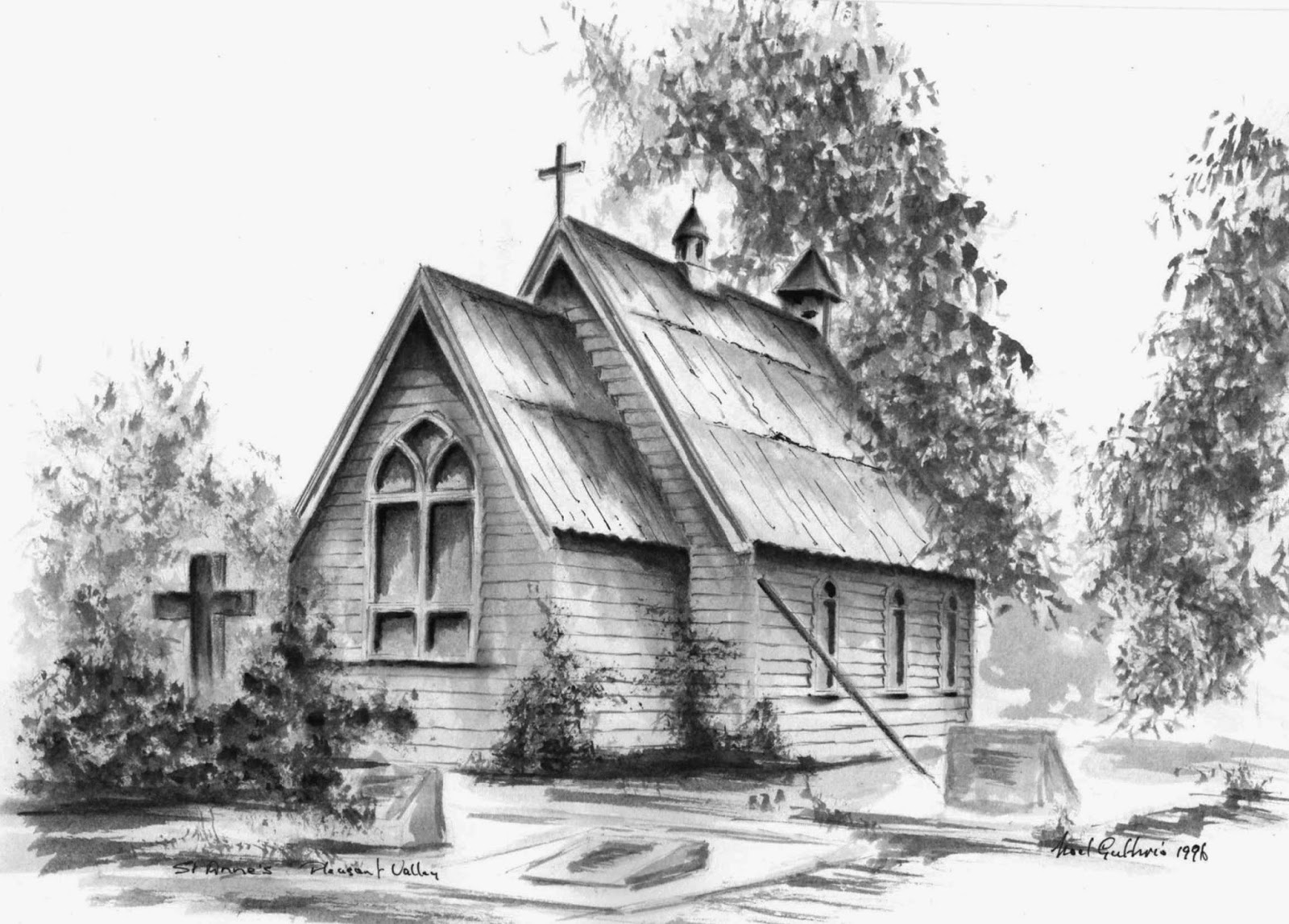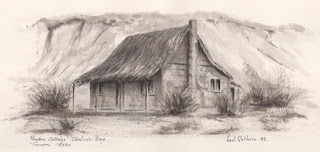A True Missionary of Life
Anne Brown
A True Missionary
of Life
of Life
Possibly the only truly pioneer Anglican Church remaining in Canterbury, New Zealand today stands at Pleasant Valley in peaceful farmland surroundings, approximately five kilometres west of Geraldine an internationally known and picturesque village.
During 1861, it is said Thomas Hardcastle,
a dedicated and enthusiastic parishioner, was the first to canvass the area
seeking funds for a new church.
The community
envisaged a practical building with a seating capacity for up to forty
worshipers.
So successful was his mission, enough
funds were available almost immediately, for the construction to begin on half
and acre of land donated by William Grace.
Laying the foundations began in 1862 by
two carpenters John Huffy and William Young, with voluntary labour supplied by
the locals.
Walls were built of cob and a roof was
sheathed with adze hewn timber shingles.
The interior timbers were pit sawn and with the use of an adze, were
trimmed to size. While cob construction was not at all uncommon, perhaps St
Anne’s is unique in that the original cob in later years was sheathed with
timber weatherboards. This protected
the cob from the elements thus saving it for posterity. Although showing only minor decay the
original cob interior could still be seen almost one hundred and fifty years
on.
The font was
fashioned from a large knot of Totara timber.
Although in later years, this was replaced. However, the original hand hewn pews still exist today.
As the centre of a bustling community, St
Anne’s was erected to the echo of the saw and the axe. It may be difficult to imagine now but
Pleasant Valley, during the 1860’s boasted a number of trades and professions.
Those listed in
the Parish register included: -
Innkeeper, bullock driver, estate owner,
contractor, shepherd, boundary rider, governess, wheelwright, domestic servant,
shoemaker, gardener, blacksmith, and a labourer.
By the 1880’s much of the bush around
Pleasant Valley had been cleared and workers began moving on to greener
pastures.
St Anne’s Church remains the only memory
of that former active community and will remain in the hearts of many. The name St Anne’s, was influenced by the
work of Anne Grey Brown, wife of Lawrence Lawson Brown, Anglican Vicar and
driving force behind the erection of this small Church.
In 1846 at the age of just seventeen, Anne
Fabor daughter of Thomas and Eleanor Fabor, of Stockton on Tee’s England,
married Rev. Laurence Lawson Brown, becoming one of the many pioneering women
destined to settle New Zealand.
In 1859, Laurence received a call to
continue teaching the Gospel in New Zealand.
Sponsored by the missionary Guild, the Brown family left Whitten Le
Wear, in the county of Durham for the parish of Sumner/Heathcote, on the edge
of Christchurch in the South Island of New Zealand.
There, Laurence
continued his work as Assistant Curate but in 1862 he was called to the
Geraldine Parish in South Canterbury.
This was a journey, which was to take the couple and their young family
six long weeks to complete by bullock wagon, losing many of their possessions
while negotiating swollen unbridged rivers and rugged terrain.
From a rented house provided by Alfred Cox
at Waihi Bush, now know as Woodbury, Laurence and Anne began to build a faith
in this beautiful but rugged countryside.
The enthusiastic leadership that Laurence brought to the community, saw
him move freely among the people sharing their joyful occasions as well as
their times of crisis. It was this sort
of leadership that saw him roll up his sleeves and becoming the principal
character in that band of volunteers who erected this small church.
Little did those
pioneers know at the time, but contributing what they could to their humble
church, they were creating a memorial for which their descendant could be
justly proud.
However, we should spare a thought for
Anne Brown. Raised in a well to do
environment in England she chose to ‘rough it’ within the primitive
surroundings in the New Zealand wilderness.
While her man
was out spreading God’s word throughout this scattered parish, Anne remained at
home with her seven children trying her best to cope, cooking over a smoking
fire and washing clothes out in the open.
Casting aside her own terrible homesick
thoughts of England, she baked for those in more desperate need than herself
she was always ready with a sympathetic word giving comfort to others.
In one of Anne’s
letters, she wrote: -
“Often lately I have met old colonists
just returned from home who now abuse the climate there. They tell me it did little else but rain
there during their visits; they never once beheld the sun, so different from
this bright sunny land. I venture to
remark that when I lived at home I did not notice the rain falling. However, that has all altered now, as it is
such a long time since I was home, nineteen years to the day that I landed in
New Zealand. Many are sure that I could
not live in gloomy England now, but daily, I wish I had the chance to try.”
During 1893 while living in Christchurch,
Anne Brown at the age of 66 years, passed away. Her body, confined to a plain casket, she was carried to Pleasant
Valley and laid to rest among her friends in the little cemetery behind the
church that bears her name.
St Anne’s Church epitomizes strength and a
gentle quality that Anne Grey Brown showed to so many. She may not have preached the Gospel, or
become a leading figure in the community, she did however, show others how to
endure and be strong.
Anne Brown and women like her, to me; they
are the true missionaries of life.
Facebook;- plow and pickle press



Comments
Post a Comment